Measurement of keffwith an improved neutron source multiplication method based on numerical analysis?
YE Bin(葉濱),ZENG Li-Na(曾麗娜),YIN Yan-Peng(尹延朋),YANG Chao-Wen(楊朝文),and ZHENG Chun(鄭春),
1Institute of Nuclear Physics and Chemistry,China Academy of Engineering Physics,Mianyang 621900,China
2College of Physical Science and Technology,Sichuan University,Chengdu 610064,China
Measurement of keffwith an improved neutron source multiplication method based on numerical analysis?
YE Bin(葉濱),1,2ZENG Li-Na(曾麗娜),1YIN Yan-Peng(尹延朋),1YANG Chao-Wen(楊朝文),2and ZHENG Chun(鄭春)1,?
1Institute of Nuclear Physics and Chemistry,China Academy of Engineering Physics,Mianyang 621900,China
2College of Physical Science and Technology,Sichuan University,Chengdu 610064,China
In this work,we developed a numerical analysis-associated experiment method to determine the effective multiplication factorkeff,which is diff icult to obtain directly from conventional neutron source multiplication (NSM) method.The method is based on the relationship betweenkeff,subcritical multiplication factorksand external neutron source eff i ciencyΦ?in the subcritical system.On basis of the theoretical analysis,the dependence ofksandΦ?on subcriticality and source position was investigated at the Chinese Fast Burst Reactor-II(CFBR-II). A series ofkswere measured by NSM experiments at four subcritical states(keff=0.996,0.994,0.991 and 0.986)with the252Cf neutron source located at different positions(from the system center to outside)at each subcritical states.TheΦ?was obtained by Monte-Carlo simulation for each condition.With the measuredksand calculatedΦ?,keffof the subcritical system was evaluated with a relative difference of<1%between values obtained by the improved method and by positive period method.Especially,the relative difference of<0.18% with the source located at the system center.
keff,Neutron source multiplication,Monte-Carlo;Fast critical system
I.INTRODUCTION
Neutron source multiplication(NSM)method,a simple measurement technique that uses an external neutron source and an ordinary neutron detector,is suitable for real-time measurement.With the recent development of acceleratordriven system(ADS)[1],an increasing attention has been paid to NSM experiments associated with various subcritical systems[2,3].Implementing this kind of experiments can acquire subcritical multiplication factorksand external neutron source eff i ciencyΦ?,which can be used to design the ADS systems,and its neutron multiplication[4,5].The subcritical multiplication factorksis related to the neutron multiplicationM[6]byks=1?1/M,but in practice one needs to know the effective multiplication factorkeff.
In this paper,in order to overcome the diff i culties of gettingkeffdirectly from the conventional neutron source multiplication method,we propose a numerically associated experiment method.In Sec.II,the NSM method and the relationship between effective multiplication factorkeff,subcritical multiplication factorksand neutron source eff i ciencyΦ?are reviewed brief l y.The experiment apparatus is described in Sec.III.In Sec.IV,for verifying the proposed NSM method,the numerical analysis and a series of NSM experiments were carried out at the Chinese Fast Burst Reactor-II(CFBR-II)at various subcritical states with252Cf neutron source located at different positions in each subcritical states(from center of the system to outside).
II.THEORETICAL BASIS
For the critical systems composed of the f i ssile materials and other materials,the neutron balance equation in fundamental mode is expressed as:

where,?0(r,E)is the neutron f l ux distribution at positionr(x,y,z)at energyE,Lis the destruction operator,andPis the production operator.By taking the inner product<...>of Eq.(1),which indicates the integration over the space and energy variables,keffin Eq.(1)can be expressed as:

For the subcritical system with an external source at steady state,the neutron balance equation is:

Similarly,the subcritical multiplication factorkscan be expressed as:

where,?s(r,E)is the neutron f l ux in the subcritical system with the external neutron sources(r,E).
The external source eff i ciency,Φ?,is the ratio of average importance between the source neutron and f i ssion neutron. TheΦ?implies that a neutron emitted from source,with a certain position and energy distribution,will produce certain“important”neutrons that can lead to higher or lower neutron multiplication for a given proliferation system.
Deduced from properties of the operator and Eqs.(1)–(4), we have Eq.(5):

Then,the multiplication factorsksandkeffcan be theoretically correlated with the neutron source eff i ciencyΦ?.
Obtainingkeffof the system through Eq.(5)needs to know theksandΦ?.As mentioned above,thekscan be measured by neutron multiplication experiment,but the quantity of neutron source eff i ciencyΦ?cannot be obtained from experiments directly.In the following sections,we acquiredΦ?from numerical analysis and evaluatedkeffsuccessfully.
III.EXPERIMENT APPARATUS REVIEW
Experiments were carried out at the Chinese Fast Burst Reactor-II(CFBR-II)[7],an ellipsoidal assembly,which consists of,from inside to outside,the enriched-uranium spherical shells,inner brass ref l ector,depleted uranium ref l ector and outer brass ref l ector.The reactor can be divided into the upper,middle and lower parts(Fig.1).The middle part is a 5.2cm thick stainless steel plate,which has three horizontal holes for three control rods to pass through,i.e.an auto-adjustment rod,a composition rod and a pulse rod. The three rods are made of casted enriched-uranium.A 10cm×4.2cm×14.5cm(w×h×d)irradiation chamber and two horizontal experimental holes are located in the plate. The neutron source can be put at any position in the horizontal holes by a neutron source transmission device.Reactivity of the assembly can be controlled by adjusting insert depth of the three control rods.The assembly works at subcritical, delayed critical or super prompt critical states.
A252Cf spontaneous f i ssion neutron source(in activity of 1.41×10?5s?1)sealed in an aluminum box ofΦ7.8mm×11mm can be sent into a horizontal hole of the stainless steel plate by the transmission device when the system is in deep subcritical state.Then,the control rods are inserted to different depths to operate the reactor at different subcritical power states.
Two BF3proportional counters,of the SZJ-1 type,produced by Beijing Nuclear Instrument Factory,are used to record the neutrons(which is proportional to the neutron density in the system).They consist of the paraff i n barrel(Hanson long counter),preamplif i er,HV power supply,main amplif i er and multi-scalar.The detectors are 180cm away from the system center.
IV.NUMERICAL ANALYSIS AND EXPERIMENTS
A.Numerical calculations
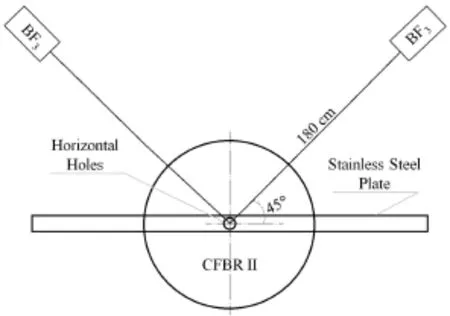
Fig.1.Schematic of CFBR-II.
Beforeaseriesofexperimentsarecarriedout,Monte-Carlo numerical method[8]was used to build the subcritical system model that is identical to CFBR-II in Fig.1.Four subcritical states ofkeff=0.996,0.994,0.991 and 0.986 were selected,which are conditions for our multiplication experiments.The source positions were changed along the r-axis at each subcritical state(i.e.0mm,20mm,40mm,60mm, 80mm,100mm,120mm and 150mm).The spontaneous252Cf neutron source,described by Watt f i ssion spectrum[9], is positioned the same way as that in the planned experiments. Theksof all the experimental conditions were calculated by MCNP5 with statistic difference of<0.7%.The neutron source eff i ciencyΦ?is closely connected with neutron importance,which is proportional to the detector response to a unit source.In other words,neutron importance is a measure of the“importance”of a neutron in contributing to the detector response,or the expected counts per neutron in certain position,direction and energy.The detector counting rates to the system with the252Cf neutron source in the core could be obtained,and the counting rate to the eigen neutron source distributed in the system could be recorded,too,by using MCNP code.The ratio of the two counting rates should be the external neutron source-related average eff i ciencyΦ?[10,11]. In terms of eigen-distribution neutron source acquisition,we used the KCODE and SSW cards in MCNP5 critical calculation to achieve the goal.Thus,we talliedΦ?in MCNP5 calculation following certain regulation according to MCNP rules.
By calculating theks,Φ?andkeffinside and outside of the neutron source,we were able to investigate the effect of system subcriticality and source position.
For the subcritical states(keff=0.994),the effect of the source positions along the r-axis are demonstrated by the calculation results in Fig.2.The source eff i ciencyΦ?and subcritical multiplication factorksat different source positions indicate that the smallest discrepancy betweenksandkeffis achieved when the source is at the center of the core.
Table 1 shows the subcriticality effect onksandΦ?atkeff=0.996,0.994,0.991 and 0.986.One sees that for the four subcritical states,when the source is at the core center,ksis very close tokeff,with a relative difference of<0.8%, and theΦ?was greater than 0.91.The results indicate that the closer the system reaches to the critical state,the more likeliness the relative values of?sand?0become equal to eachother,and so do the values ofksandkeff.Inversely,placing the source outside the core,the discrepancy betweenksandkeffbecomes much larger,with the maximum relative difference being 22.1340%atkeff=0.986 and the source being 150mm away from the core center.

Fig.2.(Color online)Effect of source position on subcritical multiplication factorksand source eff i ciencyΦ?at a f i xed subcritical state ofkeff=0.994.
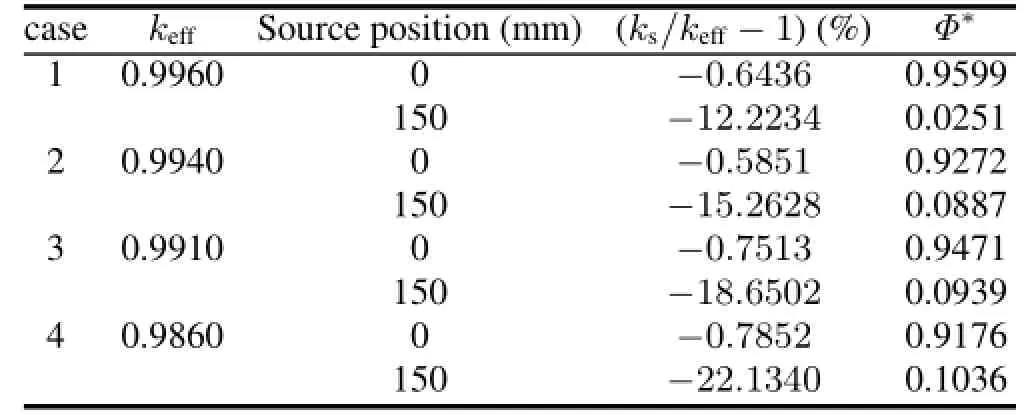
TABLE 1.Summary of subcriticality effect onksandΦ?for a252Cf neutron source in the subcritical model
In order to check the source position effects on the neutron leakage rate,we did another numerical analysis to investigate the detector response to non-collided neutrons emitted from the source,and to total neutrons.The results in Fig.3 show that the relative difference is below 0.25%.Placing the neutron source closer to the system edge,the counting rate for non-collided neutrons from the source becomes greater, while the counts of total neutrons decrease.In other words, the detector counting rate decreases for the eigen-distribution neutron(f i ssion neutron inside the system).This explains why the discrepancy betweenksandkeffbecomes large while moving the252Cf neutron source away from the system center.
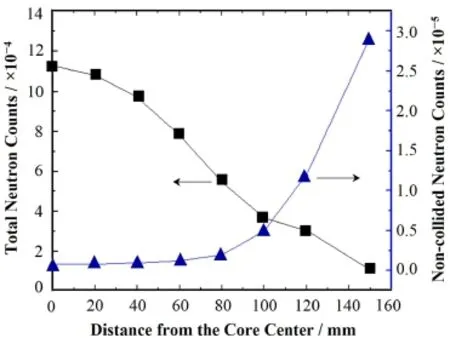
Fig.3.(Color online)The detector counts for total and non-collided neutrons(keff=0.994).
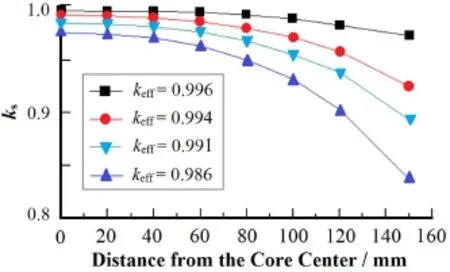
Fig.4.(Color online)ksmeasured at different subcritical states.
B.Experiments Results and Discussion
On the basis of the numerical investigation in Sec.IV.A,the NSM experiments were carried out at CFBR-II to measureksand evaluateΦ?.The subcritical states were experimentally achieved by adjusting insert depth of the control rods.All the experiment apparatus and conditions were completely identicaltothenumericalones.TheresultsareshowninFig.4.Theksdecreased with increasing distance of the source from the core center and with deepening subcriticality.This is identical to the calculation results in Fig.2.
In order to test the feasibility of this improved NSM method,we considered four subcritical states(keff=0.996, 0.994,0.991 and 0.986)and eight neutron source positions according to each subcritical states.For the sake of the calculated source eff i ciencyΦ?and the measuredks,we obtained the effective multiplication factorkeffaccording to Eq.(5)at 32 studied conditions.For comparison,we used the positive periodic method to measure the reactivity as the reference method in the work.The specif i c process is that we measured reactivity in super-criticality,and extrapolated to subcriticality with calibrated reactivity curve of control rods.
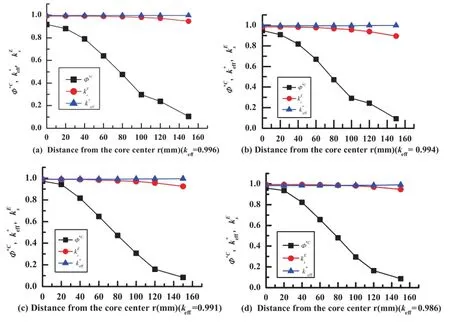
Fig.5.(Coloronline)Experiments andcalculationsresults(superscript“C”:Calculated value;superscript“E”:Experimentsvalue;superscript“*”:Evaluated value).
As shown in Table 2,a comparison between the reference method and the results in this work at the four subcritical conditions with the source located at the core center revealed fairly good agreement with a maximum relative difference of 0.18%.For a certain subcriticality(keff=0.991),the discrepancy betweenkeffmeasured by positive period method and the evaluated ones in this work is the smallest of all.Whenkeff>0.9910,the evaluatedkeffare a bit larger than experimental measured ones.However,at a very deep subcriticality,e.g.keff=0.9860,the evaluatedkeffis a little less than the measured one.This is because the source neutrons could not propagate eff i ciently in deep subcriticality.The results demonstrated the good precision of this improved method and the validation of the Monte-Carlo calculation model.
In general,keffof the system for all studied cases were well approximated as shown in Fig.5.
Thecomparisonbetweenthekeffresultsinreferences(positive period method,marked askeff?exp)and our method(keff?eva)is done by Δ∈=[(keff?eva?keff?exp)/keff?exp]×100%.As shown in Fig.6,the space effect onkeffcan be seen in a large range of the neutron position.Generally,when the neutron source is inside the subcritical system,the relative difference is small,comparing to that when the source is outside the system;and the relative dif-ference increase rapidly with distance of the neutron source to the system center,being irregularly large at the distance of>85cm,because this is where the brass and depleted uranium ref l ectors locate,causing uncertainty factor related to complicated neutron behavior.

TABLE2.Comparisonbetweenmeasuredandcalculatedkeff,ksandΦ?inthefastcriticalassemblyexperimentswhileneutronsourceput at the center of core.
Therefore,to reduce the relative difference in experiments implemented,the neutron source should be put inside the subcritical system.

Fig.6.(Color online)Relative difference at four subcritical states between calculated and measured ones.
V.CONCLUSION
A methodology to evaluate the effective multiplication factorkefffrom measuredksand numerical analyzedΦ?was investigated via NSM experiments on CFBR-II.The evaluated results were approximately equal to the reference method(positive period method).
On basis of the theoretical and numerical preparations,kswas measured through a series of NSM experiments with a252Cf spontaneous f i ssion neutron source located at different positions in four subcritical states of CFBR-II.The effective neutron multiplication factorkeffobtained in all the subcritical states when neutron source located inside of the subcritical system,within a relative difference of<0.2%between the values obtained by the improved NSM method and positive period method.So,to reduce the relative difference in experiments implemented,the neutron source should be put inside the system.The numerical analysis-associated NSM we proposed is feasible for the simple subcritical apparatus, such as CFBR-II.
[1]Chen G H,Chen J F,Wan T M.Nucl Sci Tech,2012,23:267–272.
[2]Tsuji M,Suzuki N,Shimazu Y,et al.J Nucl Sci Technol,2003,40:158–169.
[3]Pyeon C H,Morgan H,Tsuyoshi M,et al.J Nucl Sci Technol, 2008,45:1171–1182.
[4]Endo T,Yamamoto A,Yamane Y.Ann Nucl Energy,2011,38: 2417–2427.
[5]Shahbunder H,Pyeon C H,Misawa T,et al.Ann Nucl Energy, 2010,37:1214–1222.
[6]Shi Y Q,Zhu Q F,Xia P,et al.J Nucl Sci Eng,2005,149: 122–177.(in Chinese)
[7]Yang C D,Gong S L,Den M C.Tren Nucl Phys,1995,4:58–59.(in Chinese)
[8]Los Alamos National Laboratory,MCNP-A General Monte Carlo N-Particle Transport Code,Version 5.LA-UR-03-1987, 2003.
[9]Gregory D S,Robert D B,Takeshi S,et al.A Nucl Energ,1999,26:237–264.
[10]Feng P,Liu S,Wei B J,et al.Nucl Sci Tech,2011,22:379–384.
[11]Bell G I and Glasstone S.Nuclear Reactor Theory.New York: Litton Educational Publishing,1970:257–258.
Information for authors
1.NUCLEAR SCIENCE AND TECHNIQUES(NST),a bimonthly journal,is devoted to all aspects of nuclear science and technology,theoretical or experimental.Its special interest lies in the subjects of synchrotron radiation science and technology;low energy accelerators,radiation technology and applications;radiochemistry,radiopharmaceuticals and nuclear medicine;nuclear electronics and instrumentation;interdisciplinary studies of nuclear physics;nuclear,heavy ion and atomic physics;and nuclear engineering.
2.NST carries mainly two types of articles:original research reports ref l ecting achievements of creative studies or bearing Chinese regional features,and review papers on recent advances in an area pertinent to the scope of NST.
3.Submission of a paper implies that its publication has been approved by all co-authors,if any,as well as by the responsible authorities at the institution where the work was carried out.
4.An article published in any acknowledged publications before(except as part of a published lecture or thesis),or under consideration for publication elsewhere,will not be accepted.The author(s)should not submit the same article to other journals before its acceptance or sending-back by NST.
5.Manuscripts should be written in good English.They should be prepared in Microsoft WORD f i le with single line spacing and wide margins on numbered single column pages.SI units should be used.All tables,f i gures and references should be explicitly mentioned in the text.Manuscripts and related materials should be submitted online via http://www.j.sinap.ac.cn/nst/.
6.Each table and f i gure should be numbered,have a suff i ciently detailed caption with it,and be located at a proper position in the text.A table should be formatted with horizontal lines only(do not use boxes),but not between consecutive rows.A drawing should be done with thick enough lines and careful lettering, so as to remain clear after reduction for printing.Photographs should be originals.NST does not have a policy of printing colored drawings and photographs.The authors are advised to take this in mind in preparing the f i gures.
7.References in the text to other publications should be marked consecutively in superscript numbers in square brackets and listed together at the end of the text,taking the following form:Journal:Name(s)of the(f i rst three)author(s).Abbreviation title of journal,Year,Vol:Page numbers (e.g.35–40,similarly hereinafter).Book:Name(s)of the(f i rst three)author(s).Title of book.Address of publisher(city name):Publisher, Year,Page numbers.Conference/Lecture:Name(s)of the(f i rst three)author(s).Report number:Title of report.Conference name,Address(city,country),Time(month,year),Page numbers.Dissertation:Name of the author.Dissertation name,PhD/Master Thesis.University or institute,Year, Page numbers.
8.Once the submitted article is accepted by NST,the editor will notify the author(s).Author(s)of a published paper will be required to pay page charges.The corresponding author will receive two copies of the NST issue and eight off-prints free of charge.
10.13538/j.1001-8042/nst.25.020602
(Received May 29,2013;accepted in revised form November 8,2013;published online March 20,2014)
?Supported by Natural Science Foundation of China(No.11175164)?
,zhengchun@caep.cn
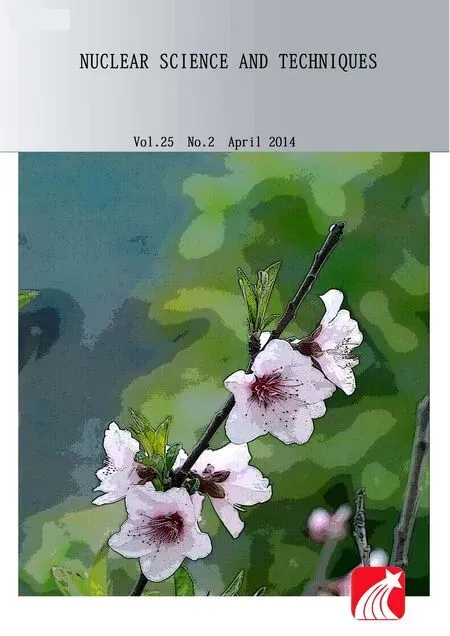 Nuclear Science and Techniques2014年2期
Nuclear Science and Techniques2014年2期
- Nuclear Science and Techniques的其它文章
- A hybrid voxel sampling method for constructing Rad-HUMAN phantom?
- Simulation of neutron diffusion and transient analysis of MSR?
- Ordered water monolayer on ionic model substrates studied by molecular dynamics simulations?
- A method for determination of the s orbital component of12Be ground state?
- Demonstration of Pm-147 GaN betavoltaic cells
- Upgrade to the front-end electronics of the BESIII muon identif i cation system
